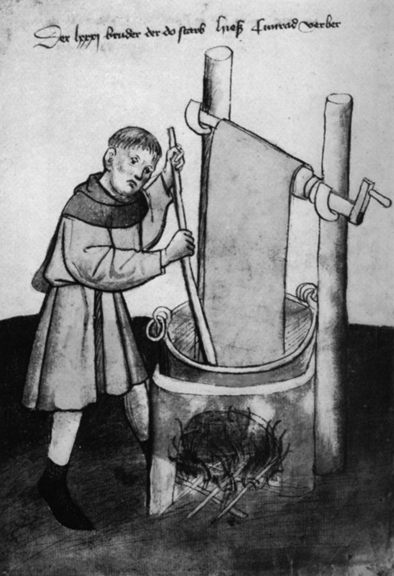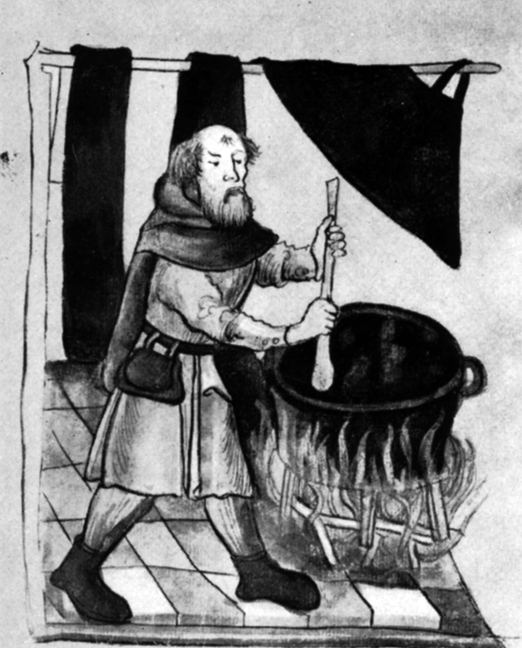In the image to the left we see a common implement of the dyer's trade: the reel. Fabric was wound on the reel so that it could be turned in and out of the dyebath to achieve a more even color. Though in all other pictures the fabric is depicted going over the reel, here it appears to be wound on it; this may be a mistake on the part of the artist. The reel is held up by two stout poles. Underneath is another common sight: A furnace with a pot or cauldron set in it. Written references refer to copper or brass pots for use with dyeing. The dyer stirs the dyebath with a large stick to encourage more even dyeing of the material. To the right is a dyer of black. Here we see the other most common setup for dye cauldrons: The dyepot is set on a three-legged stand, with an open flame below it. The fabric being dyed is in this case black, and is hanging draped over a long rod, with a sewn loop at one corner keeping it up. This is the only picture or written reference in which such a loop appears. Again, the dyer is stirring his pot with a large stick or spoon.
The pot is iron in this picture; iron pots were commonly specified for dyeing black when dyeing "common" black (using tannin + iron products) rather than the more expensive black, achieved by combining red, blue and other pigments on fabric. Common black dye in the middle ages required multiple dips to achieve a deep and lasting color.

